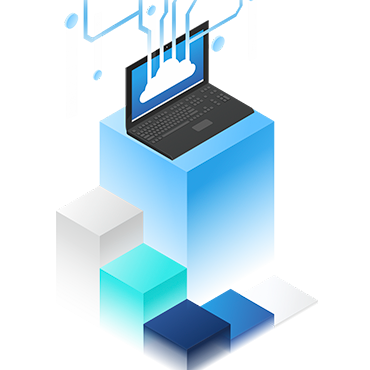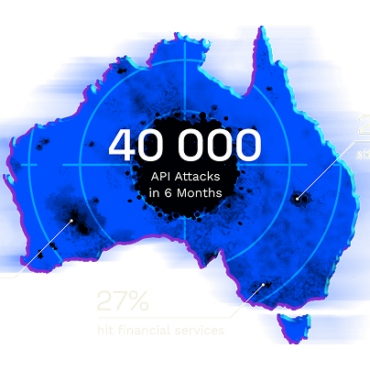The 10-Step Guide to the Web Application Development Process
Updated 23 Oct 2024
Creating a web application is an essential task for businesses aiming to improve customer experiences, streamline internal operations, and expand their reach in the digital landscape. From initial planning to final launch, each phase in the web application development process requires careful attention to ensure the success of the project. This guide will walk you through the essential 10-step web application development process to build a successful and secure web app.
The Importance of Choosing the Right Technology Stack
Selecting the right technology stack for a web application is more than just choosing popular tools; it’s about matching the project’s goals with the right technologies to ensure scalability, performance, and security. The tech stack includes the front-end and back-end frameworks, database systems, and server environments that will power the app. For example, if you expect high user traffic, you might choose a robust backend framework like Node.js or Django, paired with a reliable database like PostgreSQL or MongoDB. A well-chosen stack can make future updates easier and ensure the application remains adaptable as business needs evolve.
Scalability is another crucial factor. As your product gains more users, it should handle increased load without performance issues. Choosing frameworks that support modular development allows teams to build in sections, making it easier to scale or update specific components over time.
1. Project Planning and Requirements Gathering
The first step in developing any web application is comprehensive planning. Start by defining the scope of the project and identifying the specific needs the application will address. Engaging with stakeholders and key team members at this stage is critical. Discuss the components of the app, outline the features, and plan the architecture that will shape the app’s development.
To keep this process streamlined, create a detailed roadmap that includes timelines, milestones, and key deliverables. This roadmap serves as a guiding document for the team and ensures all aspects of the project are addressed.
2. Defining System Architecture and Technology Stack
Choosing the right technology stack is essential for building a robust web application. Evaluate the available technologies based on scalability, speed, and security. Select a programming language, database management system, server environment, and front-end and back-end frameworks that align with your app’s development goals.
An efficient architecture lays the foundation for a scalable and adaptable web application. Consider how data will flow through the system, how components will interact, and how different systems will be integrated.
3. Emphasizing User-Centric Design. Wireframing and Designing the UI/UX
User experience (UX) plays a central role in an app’s success, impacting both user satisfaction and engagement. Investing in a thoughtful design process early on saves time and resources by minimizing usability issues later in development. Beyond wireframing, effective UX design requires understanding the app’s target audience and their preferences. Creating user personas and conducting user research can provide insights that inform layout choices, navigation paths, and app interactions.
A good design ensures the application is accessible, intuitive, and responsive across devices. Leveraging responsive design principles, such as mobile-first design, ensures that the app provides a consistent experience on desktops, tablets, and smartphones. Regular user testing and feedback throughout the design process allow developers to make adjustments, creating an app that truly resonates with its users.
In this step, the design phase begins with wireframing to create a visual representation of the application layout. Use design tools to map out each page’s structure, components, and content placement. Focus on user experience (UX) principles to ensure that the app is intuitive, responsive, and user-friendly.
After wireframing, proceed to high-fidelity mockups where colors, typography, and interactive elements are added. This phase will give the app a clear visual identity and set the tone for the final design.
4. Creating a Prototype
Building a prototype allows stakeholders and team members to interact with a mock version of the application. Prototyping provides insight into how the app will function and highlights any potential issues. At this stage, users can offer feedback that can guide adjustments before full-scale development begins.
A well-constructed prototype is a practical way to test the flow and usability of the application, reducing the need for extensive modifications later in the development process.
5. Back-End Development
Back-end development focuses on creating the server-side logic, database structure, and API integrations. This step includes setting up a secure server environment, configuring databases, and building the core components that will support the app’s functionality.
The back-end development team ensures that the database efficiently handles data retrieval and storage, and that the API connects seamlessly with other services and systems. Security measures, such as data encryption and access controls, are also implemented in this step to protect user data and app integrity.
6. Front-End Development
Front-end development is responsible for bringing the design to life, using HTML, CSS, JavaScript, and other tools to create the app’s user interface. This step is crucial in ensuring that the application is not only visually appealing but also responsive and compatible with various devices and platforms.
During this phase, front-end developers work closely with designers to ensure that the app’s design elements align with the prototype. It’s important to test the app across browsers and devices to ensure consistency in user experience.
7. Integrating APIs and Third-Party Services
Most modern applications rely on API integrations to add advanced features without building them from scratch. This could include payment gateways, geolocation services, or authentication systems. Integrating these components in this step adds essential functionality to the app and improves the user experience.
It’s important to thoroughly test each API integration for compatibility, reliability, and security. This integration phase enhances the app’s overall functionality, allowing it to interact seamlessly with external systems.
8. Testing and Quality Assurance
Testing is critical to ensuring that a web application performs reliably and securely. This phase includes a combination of manual and automated tests to catch potential issues before the launch. Testing checks the application for bugs, compatibility issues, performance problems, and security vulnerabilities. Automated tests, such as unit tests, validate the performance of individual code components and ensure they function as expected, even when minor adjustments are made during development. Additionally, integration testing verifies that different parts of the application work seamlessly together.
Manual testing remains essential for evaluating the user experience and assessing usability. Security testing is particularly crucial for applications that handle sensitive information, as it helps identify vulnerabilities and strengthens data security. Load testing should also be conducted to assess how the app performs under different levels of user traffic, helping the team anticipate potential performance bottlenecks.
Quality assurance (QA) testing ensures the app meets user expectations. Conduct usability tests to make sure the app is intuitive and that all components function smoothly. Performance testing, load testing, and security testing are essential to ensure the application can handle high traffic and is resistant to potential threats.
9. Deployment and Ongoing Support
The launch of a web application is not the endpoint but the beginning of a new phase. Deployment involves setting up the application on a live server and configuring it to handle user traffic smoothly. Cloud services like AWS, Azure, and Google Cloud offer scalable environments that are ideal for high-traffic applications. Before a full launch, many teams perform a soft launch or beta testing to a smaller user base, allowing developers to catch any unexpected issues in real-world conditions.
After thorough testing, the application is ready for launch. Deploying the app involves uploading it to a live server and configuring it to run smoothly in a production environment. This step may also include setting up domain names, SSL certificates, and database connections.
A soft launch, where the app is initially released to a smaller audience, is often recommended to gather real-world feedback and make any necessary adjustments. Following this, a full launch introduces the app to a wider audience.
Post-launch maintenance and support are essential for keeping the app functional, secure, and aligned with user expectations. Regular updates help to patch security vulnerabilities, enhance performance, and introduce new features based on user feedback. Monitoring tools such as Google Analytics and performance monitoring software like New Relic or Sentry allow developers to track the application’s health and respond quickly to any emerging issues.
10. Post-Launch Support and Maintenance
The web application development process doesn’t end with deployment. Post-launch support and maintenance are crucial for fixing any unforeseen issues, updating components, and adding new features as needed. Regular maintenance ensures the application remains secure, functional, and aligned with the evolving needs of the project.
Monitor the app’s performance, gather user feedback, and implement updates to keep the application relevant. Ongoing support helps address any emerging security concerns, ensuring the app remains protected from potential vulnerabilities.
Conclusion
Building a successful web application requires careful planning, a clear development roadmap, and a commitment to security and usability. By following this 10-step process, you can create an app that not only meets your project goals but also delivers a valuable user experience. Each step in this process is important and contributes to the product’s success.
The web application development process demands the collaboration of skilled professionals in design, back-end and front-end development, database management, and security. This guide serves as a comprehensive approach to building reliable, efficient, and scalable applications that drive business growth and deliver exceptional value to users.
Embark on your web app development journey with a solid foundation, and let each step bring you closer to a successful launch and a robust product.



